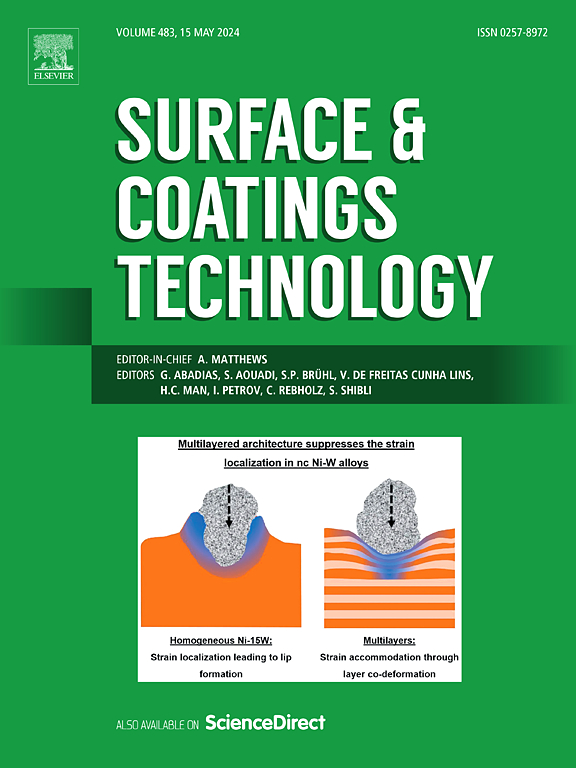A facile synthesis of density-tunable ZnO nanorod-array on PVTF film for biomedical application
IF 5.3
2区 材料科学
Q1 MATERIALS SCIENCE, COATINGS & FILMS
引用次数: 0
Abstract
The nanotopological morphology of biomaterials plays a significant role in cytocompatibility. As a coating for tissue engineering implants, zinc oxide nanorod (ZNR) arrays are usually utilized as anti-adhesion layers for cells with relatively limited applications in regulating cytocompatibility such as cell adhesion and proliferation. In this study, ZNR arrays were loaded onto the surface of the poly (vinylidene fluoride-trifluoroethylene) (PVTF) substrate, and an embedding effect of molten PVTF on ZNR was achieved through high temperature capillary phenomenon. The embedding degree could be controlled by adjusting the C-axis orientation of ZNR arrays, thus allowing the construction of PVTF-ZNR composite films with varying nanorod distribution densities. The tunable surface nanotopology structure regulated the adhesion and proliferation behaviors of bone marrow mesenchymal stem cells (BMSCs), among which the surface nanostructure with a low nanorod distribution density was conducive to the spreading and proliferation of BMSCs. Furthermore, the nanostructure can detach from the surface after the early stage of adhesion and proliferation, ceasing to affect cellular behavior. The composite film is beneficial for tissue regeneration implants to promote cell adhesion and proliferation in early implantation. Additionally, it's promising in further repair due to the excellent piezoelectric property of PVTF.
求助全文
约1分钟内获得全文
求助全文
来源期刊

Surface & Coatings Technology
工程技术-材料科学:膜
CiteScore
10.00
自引率
11.10%
发文量
921
审稿时长
19 days
期刊介绍:
Surface and Coatings Technology is an international archival journal publishing scientific papers on significant developments in surface and interface engineering to modify and improve the surface properties of materials for protection in demanding contact conditions or aggressive environments, or for enhanced functional performance. Contributions range from original scientific articles concerned with fundamental and applied aspects of research or direct applications of metallic, inorganic, organic and composite coatings, to invited reviews of current technology in specific areas. Papers submitted to this journal are expected to be in line with the following aspects in processes, and properties/performance:
A. Processes: Physical and chemical vapour deposition techniques, thermal and plasma spraying, surface modification by directed energy techniques such as ion, electron and laser beams, thermo-chemical treatment, wet chemical and electrochemical processes such as plating, sol-gel coating, anodization, plasma electrolytic oxidation, etc., but excluding painting.
B. Properties/performance: friction performance, wear resistance (e.g., abrasion, erosion, fretting, etc), corrosion and oxidation resistance, thermal protection, diffusion resistance, hydrophilicity/hydrophobicity, and properties relevant to smart materials behaviour and enhanced multifunctional performance for environmental, energy and medical applications, but excluding device aspects.
 求助内容:
求助内容: 应助结果提醒方式:
应助结果提醒方式:


